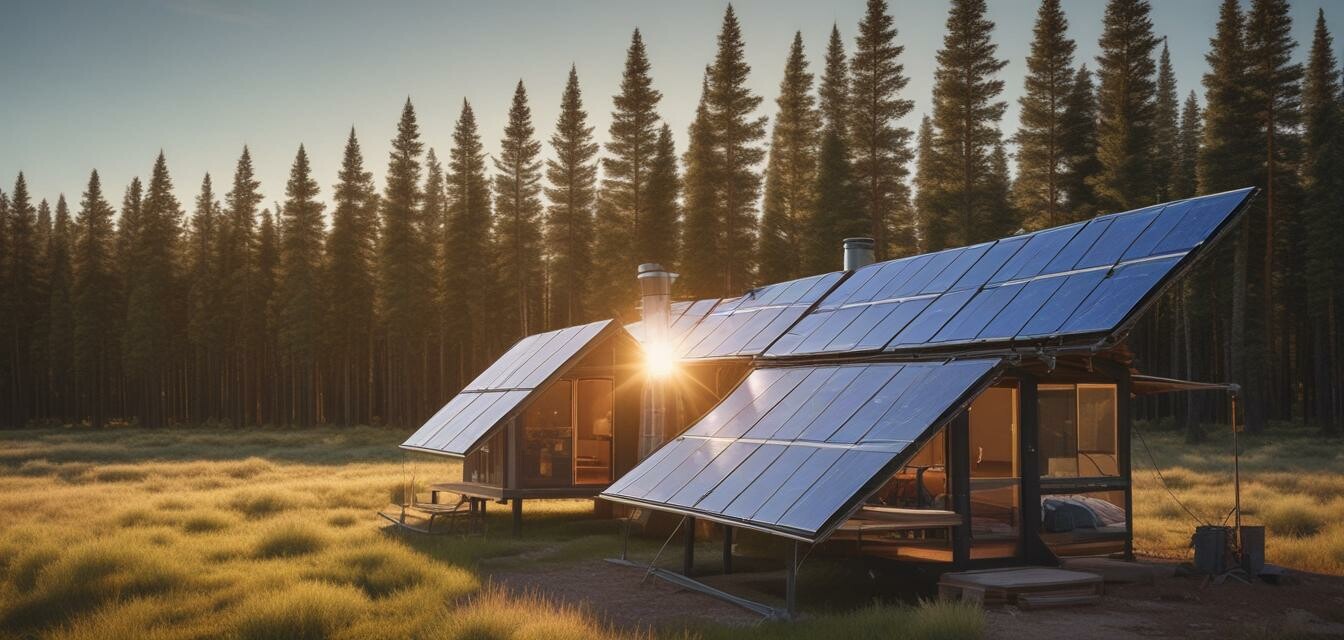
Best Practices for Solar Panel Maintenance While Camping
Key Takeaways
- Regular cleaning increases solar panel efficiency.
- Proper positioning maximizes solar energy absorption.
- Timely inspections can prevent costly damages.
- Utilize protective covers to extend the life of your panels.
- Maintain battery health for optimal energy storage.
When embarking on a camping adventure, harnessing the power of solar energy can significantly enhance your experience. Whether you’re enjoying a weekend getaway or an extended trip, ensuring your solar panels are well-maintained is crucial for maximizing their efficiency. In this article, we will explore best practices for solar panel maintenance while camping, helping you get the most out of your gear.
1. Regular Cleaning of Solar Panels
It’s essential to keep your solar panels clean to maintain optimal energy production. Dust, dirt, and debris can significantly affect their performance. Here are some simple tips for cleaning:
- Use a soft brush or cloth for light cleaning.
- A mild soap and water solution can help remove stubborn dirt.
- Always rinse well to prevent any soap residue.
Cleaning Schedule
Depending on your camping location, here’s a quick cleaning schedule:
| Camping Environment | Cleaning Frequency |
|---|---|
| Desert or sandy areas | Every 3-4 days |
| Wooded or forested sites | Once a week |
| Urban or park environments | Every 2 weeks |
2. Proper Positioning of Solar Panels
The placement of your solar panels is just as important as their cleanliness. To maximize solar energy absorption:
- Set up the panels in direct sunlight for most of the day.
- Adjust the angle of the panels as the sun moves.
- Avoid areas with heavy tree cover or obstructions.
Angle Adjustment Chart
Here's a simple guide to adjusting your panel angles based on the time of year:
| Season | Recommended Angle |
|---|---|
| Spring | 30-45 degrees |
| Summer | 15-30 degrees |
| Fall | 30-45 degrees |
| Winter | 45-60 degrees |
3. Inspecting Your Solar Panels
Frequent inspections can help you identify any potential issues before they become serious problems. Here’s what to check:
- Look for cracks or chips in the panels.
- Inspect the wiring for any signs of wear or damage.
- Ensure connectors are secure and free of corrosion.
Inspection Schedule
For optimal performance, establish an inspection routine:
| Inspection Type | Frequency |
|---|---|
| Visual inspection | Every few days |
| Professional check-up | Every 6 months |
4. Using Protective Covers
When not in use, it's wise to protect your solar panels with covers. This practice prevents weather damage and prolongs their lifespan. Consider the following:
- Choose covers made of durable, weather-resistant materials.
- Make sure the covers fit securely over the panels.
- Store the panels in a cool, dry place when not in use.
5. Maintaining Battery Health
To maintain efficient energy storage, take good care of your solar battery:
- Charge the battery fully after each use.
- Avoid deep discharges; keep it above 50% capacity.
- Check terminals for corrosion and clean as needed.
- Follow the manufacturer's guidelines for care.
Battery Maintenance Checklist
Follow this maintenance checklist for optimal battery health:
- Inspect terminals and connections monthly.
- Test battery voltage regularly.
- Replace any damaged batteries immediately.
Conclusion
By following these best practices for solar panel maintenance, you can ensure that your solar-powered camping experience is efficient and enjoyable. Clean your panels regularly, position them for maximum sunlight, perform timely inspections, use protective covers, and maintain battery health. For more insights on optimizing your solar camping experience, explore our Expert Tips category.
Pros
- Enhances energy efficiency.
- Prolongs the lifespan of solar gear.
- Ensures uninterrupted power supply during camping.
Cons
- Requires consistent effort and time.
- Potential costs for cleaning supplies or replacement parts.
For more information about solar-powered camping gear, check out these helpful links: